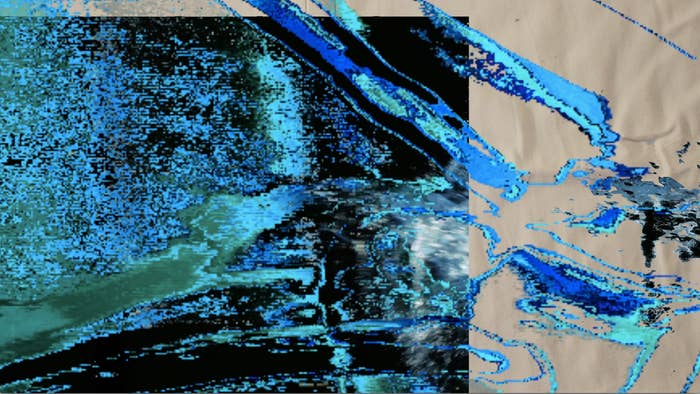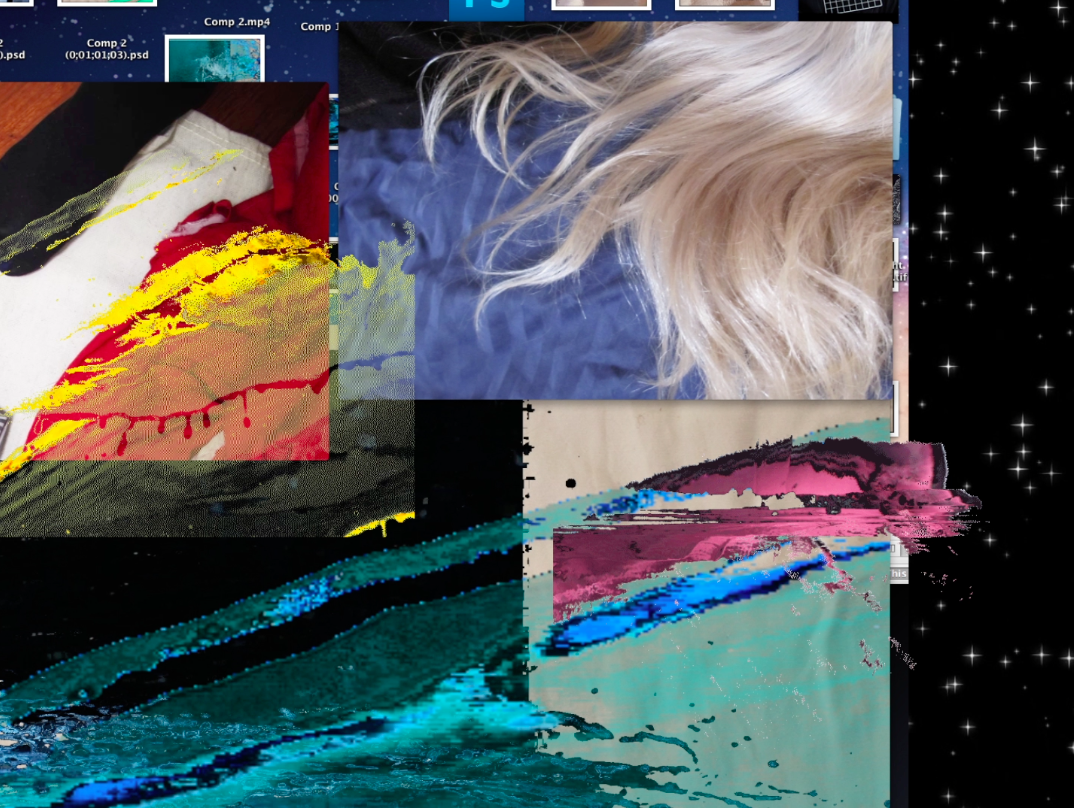
The fresh frontier of art, the Internet, democratizes contemporary art. Its practitioners can, for the first time, reach an unlimited audience and play, almost without boundary, with the potential of social platforms. Among the myriad of community-driven web products, Tumblr is king in the art world. There, artists can both explore the web as medium and employ its opportunity as an incubator of ideas.
In 2014, web art has emerged from the fringes to become a celebrated point of discovery. Led by director Helen Toomer, PULSE Contemporary Art Fair is helping to progress this cutting-edge contemporary work, incorporating digital art into its thoughtful, innovative programming.
PULSE’s new media platform, PULSE Play (sponsored by Tumblr), is helmed by independent curator Lindsay Howard. With a keen eye for emerging digital trends, Howard explores the ways the Internet shapes art and culture. For Play, she’s selected six short works that respond to the concept of noise—whether aural or the frenetic buzz of media.
Two of the videos are by Italian-born, New York-based artist Carlo Ferraris. His work, I’m no longer obsessed with winning, is akin to a rap video: a first person romp through Times Square in which the narrator/singer spits out lines pulled from passing billboards. He creates a harmony, a pattern, within a disjointed environment. Alexandra Gorczynski, who also has two works in PULSE Play, produces folksy, hypnotizing collages that surface a stoic response to the complexity of contemporary life. Tilo Baumgaertel is also represented, and Idan Levin, and Tracey Snelling collaborated on a video as well. All of the artists are thematically linked to galleries—Lipzig, Germany’s galerie Kleindienst, the LYNCH THAM and Rena Bransten galleries in New York, and Dallas’ Zhulong Gallery—exhibiting at the fair. Play launches today on PULSE's Tumblr.
We spoke to Howard about trends in new media, establishing PULSE Play, and what collectors interested in digital art should consider before buying.
1.

How did you first become engaged in new media and emerging art platforms?
I started, actually on Tumblr, in 2009 collecting materials associated with digital art. I used the Tumblr as a research blog. From that point, I started getting invitations from galleries to start curating exhibitions, and building relations with artists and collectors. I ran a space called 319 Scholes for four years, where I brought in international artists and curators to organize exhibitions. Basically, we gave net artists a physical space to house their works.
After about four years, I saw that there was a real need to create a market around digital art, and around that time Phillips began thinking on the same wave length—they reached out to me about curating their first digital art auction, which took place last October. That was organized, also, with Tumblr. We brought 20 artists specializing in digital art to market for the first time in an auction house. It was so successful that we did it again in London in July of this year, with Phillips and Tumblr both as partners.
How did end up working on PULSE Play?
I had an opportunity to work with Tiana [Webb Evans], who is now working with PULSE Contemporary Art Fair, at Phillips. So, when she reached out to me about the PULSE Play program, I thought it was a really interesting way to continue the conversation about, and advocacy for, digital art that I’ve been doing for the last five years.
What are some of the challenges of changing perceptions of the art market? Is there resistance?
I was nervous that there was going to be resistance, but what I actually found is that it was embraced, especially with the auction being at Phillips. The collectors they have are really curious about contemporary art. Digital art is really the most contemporary art. They had a lot of questions about how you collect something that is immaterial, or how you collect a website, a GIF, or a video, and then how you display that in the home. There are a lot of questions to unpack, and I find that collectors are actually interested in exploring those solutions. Certainly, artists are. I would say that even more than curators, dealers, and institutions, artists are the ones who are innovating new monetization models and new display models.
2.

Digital art is really the most contemporary art.
When I look at the Play prospectus I notice incredibly short timeframes for the selections. Do you think that, in part, this is a reaction to how lengthy traditional video art has become? What was your process for vetting submissions?
For the selections for Play, I watched about 40 submissions in total. Some of them were 25 minutes long, and some were, as you’ve seen, 50 seconds or one minute. I found that the ones that resonated with me were the shorter ones. I was watching with an open mind, and I selected things that were responding to this idea of an increasing absorption of data, an oversaturation, and the idea of noise. These pieces either resist the idea of noise, transform it, or surrender to the overwhelming input of contemporary culture. These just happened to be shorter ones, but each looks at the idea from a different perspective.
How do the artists you’ve chosen follow on the idea of noise, and what other storylines connect the work you’re exhibiting for Play?
I really felt like these works were the most contemporary of the group, and that they were really speaking to that idea of noise. When people talk about digital they don’t really think of it as being handmade, but there felt like there was something in all these works for Play that had a strong identity, visually and conceptually that felt so tied to the artist, as if no one else could have made that particular work. That was something I was really drawn to, either there were certain details, certain angles, or certain styles that were just so particular to each individual artist that I was really interested in those details. Overall, I saw they were telling this story about oversaturation and how the repetition of information created these patterns and that we could create our own meaning within them.
Miami has blossomed to be so bustling that there is simply quite a lot of noise during the week of the fairs. How does something like this, and moving PULSE to the beach and tightening its scope, work in context and also in elongating the experience outside of the tent?
One of the amazing things that Helen Toomer [PULSE’s director] is doing is making the fair 365. It’s really about year-round programing, and I think that is the direction she wants to move toward. She also has the vision to partner with Tumblr. All of these pieces will be exhibited at the fair, but also exist online so people from all over the world can connect with the work. It is a really visionary move for PULSE Contemporary Art Fair, to bring it outside of the fair and put it online.
Obviously you’ve been working with Tumblr for some time. What is your gut feeling about the platform, specifically for art? There are all sorts of emerging platforms, you could also, for example, do something with Snap Chat or Instagram video.
I love the Tumblr platform. It just has the largest community of artists on the Internet, and it has grown incredibly to include arts organizations and institutions. There is an incredible buzz on the platform. One of the things about Tumblr is that you can use the tools available, but also go into the code and make it really personal with your themes. You can basically use Tumblr as a medium. That potential is built into the platform. I see a lot of creative potential and I see that a lot of artists are inspired by it. I’m also really interested in the network that exists there and the quality of the artwork that is on Tumblr already.
3.

All of these pieces will be exhibited at the fair, but also exist online so people from all over the world can connect with the work. It is a really visionary move for PULSE Contemporary Art Fair, to bring it outside of the fair and put it online.
What are some great examples of Tumblr as a medium?
My favorite is Hyper Geography by Joe Hamilton. The piece is an ongoing collage of images from the natural realm that he has developed on Tumblr and that evolve as you scroll down the page. There are a lot of curators using Tumblr as a research platform, and then it simultaneously becomes an exhibition space as well. I think that is a really innovative way to use it.
Finally, if I’m interested in buying digital art what are some key elements to consider?
One of the really important things for digital art is to look at the artist’s online presence. I’d say that artists who are engaging with digital media are really interested in the social network as well. You can learn a lot though how the artists represents themselves that way, as much as you can in more polished gallery exhibitions because I think we are really moving toward a time where works become even more conceptual and spread across even more platforms. The concepts that artists are incubating in platforms like Tumblr are evolving into their gallery exhibitions and works that will be for sale.
It is important to think about the type of hardware, especially if you are thinking about collecting video art, or websites. A lot of artists will have very specific desires for how the work is presented. Many artists want really thin bezels on the screens, and really limited corporate branding, so it doesn’t distract from what’s on the screen. They have certain installation ideas about the cords. Some artists want to hide the cords, others want the cords highlighted. It is important to be in dialogue with the artist or dealer about different modes for installation.
I would also say that, for the last 20 years, net art has primarily been supported by non-profit institutions and universities. An institution such as Rhizome at the New Museum has been an incredible advocate and supporter of emerging digital art throughout that time, and now for grants too. They have a blog where they update constantly about digital artists.
Reading and keeping in touch with trends, as well as being aware of the historical context for the work and supporting institutions, is really important.
2014 PLAY Miami Beach Works
Tilo Baumgaertel, War and Peace – 2 min, 45 sec
Alexandra Gorczynski, Static Stream – 52 sec
Alexandra Gorczynski, Little History II – 1 min, 13 sec
Carlo Ferraris, I’m no longer obsessed with winning – 3 min, 55 sec
Carlo Ferraris, Return from Jupiter – 1 min
Tracey Snelling and Idan Levin, The Stranger – 4 min, 42 sec
PULSE Play launches today on Tumblr. The selections will also be presented in situ at PULSE Miami Beach from Dec. 4 through 7, 2014.

